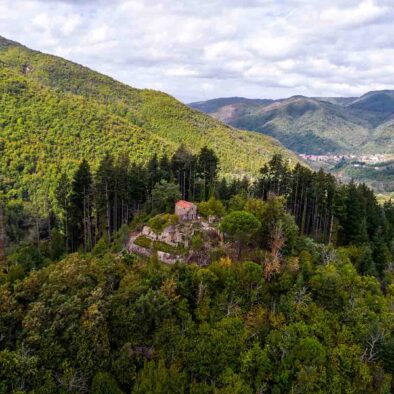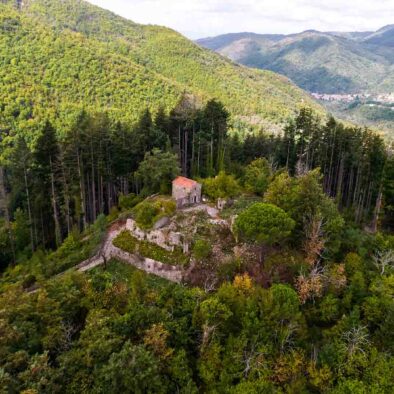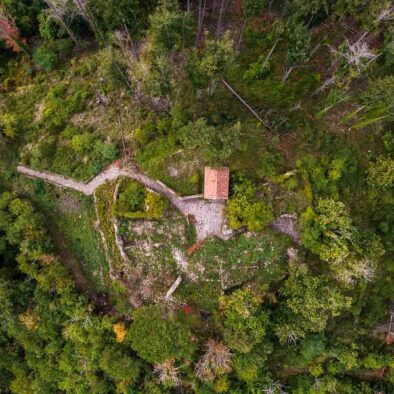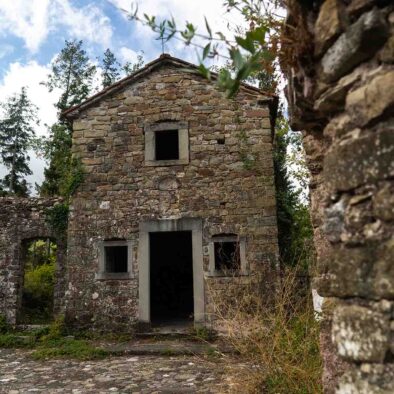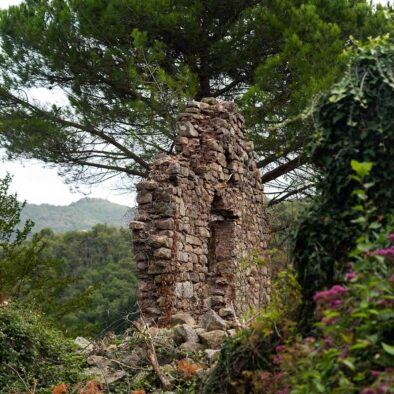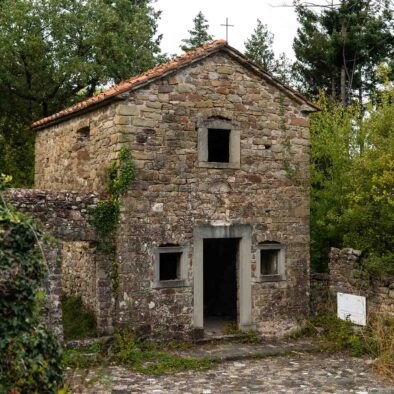Village and castle of Bergiola
The medieval castle of Bergiola is located in the area of the so-called Garfagnana Lunense, i.e. in the territory, geographically belonging to the Garfagnana, but subject, religiously, to the Diocese of Luni. In fact, nothing is known of the locality in the centuries preceding the Middle Ages when the castle is documented, located in a strategic position, between Garfagnana and Lunigiana, on the side of the Aulella Valley, forming a line of fortifications with Renzano, Albiano, Pugliano, Castiglion delle Ginestre (Castiglioncello), Montefiore and Regnano; fortifications placed in the street area of one of the main variants (the Via del Volto Santo) of the road system of the Via Francigena. It was one of the fortifications of the Marquises Malaspina della Lunigiana who had jurisdiction over the territory denominated by the Lucchesi of the “Terre di Oltre yogo” (ultra iuva), as they were located beyond the Tea and Minucciano passes.
These lands were a compact territorial entity, mentioned several times in history, which united Casola, Bergiola, Pugliano, Albiano, Renzano, Novella, Metra and Sermezzana in the context of the parish of S. Lorenzo di Vinacciara. Instead, it is documented during the fourteenth century, when it lived a very troubled history. In 1308, Bergiola belongs to Lucca, appearing among the castles required, by statute, to carry the candle for the feast of S. Croce. In the second half of the 15th century Casola enters the orbit of Florence, which it will give itself to in 1496. Thus the unity of the lands beyond the yoke with Bergiola is broken. The castle of Bergiola therefore finds itself as the last outpost, with Pugliano, of the state of Lucca, on the border, until 1496, with the state of Florence, firmly established in eastern Lunigiana with the Captaincy of Fivizzano (1477-78). In this location it is affected by all the controversies between the two states of Lucca and Florence. The village which developed within the walls and of which large remains remain is, in large part, the result of post-medieval construction. The earthquake of 1920 and, even more, the depopulation after the Second World War led to the abandonment of the town of Bergiola.


